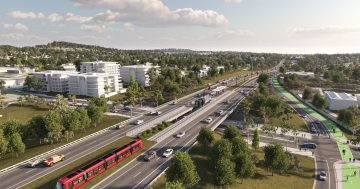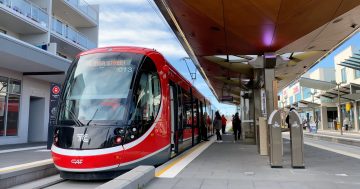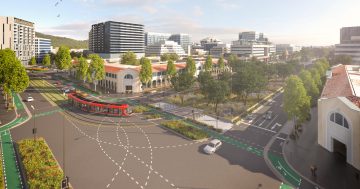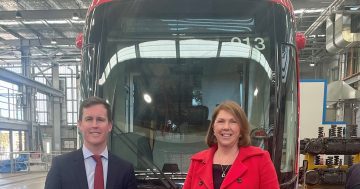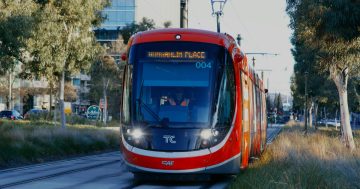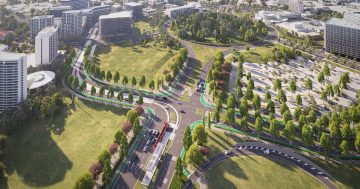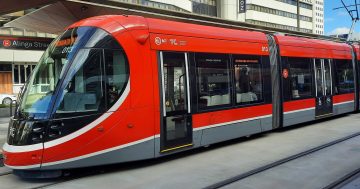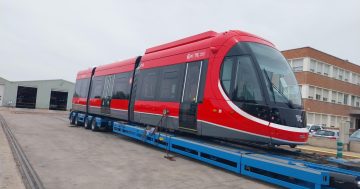
Light rail has been a huge success with wider economic benefits, the government says. Photo: File.
Population and property values have increased along the light rail Stage 1 route, according to a 12-month review of the project released by the ACT Government.
It has also reported less traffic along Northbourne Avenue since light rail began running.
The review, released after a year of operations, highlights the project’s economic benefits and will help inform planning, design and delivery of future city-shaping infrastructure projects, including the next stage of light rail to Woden, the government says.
Transport Minister Chris Steel said light rail had been a huge success with the project coming in under budget and experiencing an immediate jump in public transport use.
“Comfortable, reliable and frequent services has seen a sustained increase in people using public transport, with more than 4.2 million boardings over the year,” he said, although the COVID-19 restrictions impacted travel in March and April.
Mr Steel said the review confirms the projects wider economic benefits, saying living and working next to light rail has proved popular and is contributing to the Northbourne corridor’s rejuvenation
It says that based on 2016 ABS Census data, population growth in suburbs along the light rail corridor has exceeded what was initially expected in the business case by nearly 2,500 people.
From 2014-2018, average house prices increased by 17 per cent across the whole of the ACT but were higher in the areas incorporating the light rail corridor – 39 per cent in the Inner North and 27 per cent in Gungahlin over the same period.
There was also an average increase between 2011-2018 in the unimproved value of blocks of 35.2 per cent, which was significantly greater than the Territory average of 21.7 per cent for the same period.
The review says that the project helped grow a more diversified Canberra economy through increased business and commercial floor space along the light rail corridor.
“Redevelopment of the corridor, particularly Northbourne Avenue, is attracting new business and commercial operations, including the new ACT Government office and mixed-use development at the Dickson interchange,” it says.
The Asset Recycling initiative also allowed the replacement of 1,288 aged public houses and relocation of public housing tenants to newer, higher quality homes.
The review says there has been a consistent upward trend in footfall including Civic, Dickson and Gungahlin, indicating higher commercial activity occurring along the corridor from April to December 2019.
Road count data also shows up to a 20 per cent reduction in vehicles travelling along Northbourne Avenue during the morning peak period.
Based on February 2020 survey data, around three in five customers used active travel to get to a light rail stop – 57 per cent walked while 3 per cent rode a bike and took it on board and 1 per cent rode a bike and left it at the station.
Community feedback has included concerns about overcrowding in light rail vehicles, safety issues for women at stops, a need for more end of trip facilities, better access for people with a disability and construction of a stop at the Mitchell industrial area.
“Canberrans can already see the broader economic and social benefits that light rail has brought to our city,” Mr Steel said.
“This is a long-term infrastructure investment, and more benefits will continue to be realised and measured over the years and decades to come.”
He said Stage 1 of light rail created 4,750 jobs, and Stage 2 would also have an important role to play in supporting more construction jobs and assisting the ACT’s economic recovery.













